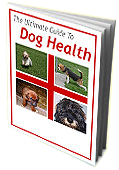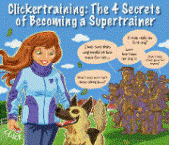Good Dog Training Advice
Get Fast & Simple Dog Training Tips to
Turn a Difficult Dog Into an Obedient Pet!
Ways to Remove And Get Rid of Tick Bites in Dogs
Dog require a constant supply of water. Though some foods will contain substantial levels of water it is vital that your dog has access to clean water and should be part of a healthy dog's diet. Water serves many functions, as in humans water is vital for life and it drives the various metabolic processes. Water is required as a medium for transport of nutrients as well as electrolytes. Water is a major constituent of blood and it helps maintain blood volume. On top of that, water also serves to maintain normal electrolyte balance. How do you know if your dog is dehydrated? There are several stages of dehydrations and you should educate yourself on basic first aid for dogs to handle any emergencies. The signs will depend on how long the dog has been deprived off water. However signs to look out for are: - Skin elasticity Dehydrated dogs are more likely to have a very tight skin that will almost be stuck to the body. You can check this by pinching the skin, when you release the skin should bounce back, if it takes some time to return to normal then your dog is probably dehydrated. - Sunken eyes - Dry mucus membranes - Weak pulse The obvious solution is to rehydrate using water. Ideally when rehydrating, use clean sources of water and keep it in a place where your dog can freely access it. In certain conditions such as hot environmental conditions or after exercise, the dog will require more water thus be sure to provide it. If you give foods that are high in salt, it will also increase your dog’s need for water thus the need to keep the dog’s water bowl filled up. Do not let your dog drink out of toilet bowls or puddles. Although he may like this a lot, this water may be a source of infection. Instead ensure that his bowl always has water. Keep the bowl in a cool place. That way, there will always be a refreshing drink for your dog on a hot day that will help it cool off. Since dogs lose water by way of panting and their footpads, their electrolyte balance is not likely to be affected. Thus, if the dehydration doesn’t arise from any underlying illness, simple plain water will suffice. Dehydration may also result from illnesses that cause vomiting, diarrhoea and fever. Vomiting and diarrhoea will cause loss of ions which results in imbalances. When trying to rehydrate a sick dog, it is always better to seek the help of a vet. This will ensure that the disease is correctly diagnosed and correct fluids are given to replace those lost. If the dog is not drinking water, you can replace the fluid by giving water and other fluids orally. In more serious cases, a very dehydrated dog or one that is not able to drink water may be given fluids using an I.V drip. When rehydrating a sick dog, you will require in addition to water, other fluids that provide electrolytes. These fluids will vary in composition but should have sufficient quantities of Na+ to stimulate intestinal absorption of water as well as re-absorption of sodium ions. If you cannot get to a vet, you can go to your local pharmacy and buy a rehydrating solution for children. Most of these products will also work well for dogs.
| |
|


Discover the Secrets to Training Your Dog Or Puppy. Huge BONUSES for a limited time only!
Click here now...
|
http://GoodDogTrainingAdvice.com






